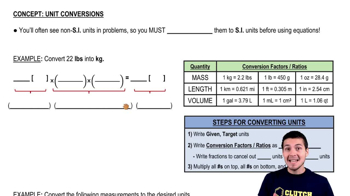Here are the essential concepts you must grasp in order to answer the question correctly.
Potential Energy
Potential energy is the energy stored in an object due to its position in a gravitational field. In the context of a hydroelectric dam, the potential energy of water is determined by its height above the turbine. The formula for gravitational potential energy is PE = mgh, where m is mass, g is the acceleration due to gravity, and h is the height. This energy is converted into kinetic energy as the water falls, which is then used to spin the turbine.
Recommended video:
Efficiency
Efficiency in a system refers to the ratio of useful output energy to the input energy, often expressed as a percentage. In this case, the dam's efficiency of 80% means that 80% of the potential energy of the falling water is converted into electrical energy, while the remaining 20% is lost, typically as heat or sound. Understanding efficiency is crucial for calculating how much energy is actually available for conversion into electricity.
Recommended video:
Efficiency of a Nuclear Power Plant
Power and Energy Conversion
Power is the rate at which energy is transferred or converted, measured in watts (W), where 1 watt equals 1 joule per second. In this scenario, the dam needs to generate 50 MW (megawatts) of electrical power, which is equivalent to 50 million joules per second. To find out how much water is needed, one must relate the power output to the potential energy of the falling water, taking into account the efficiency of the system.
Recommended video:
 Verified step by step guidance
Verified step by step guidance


